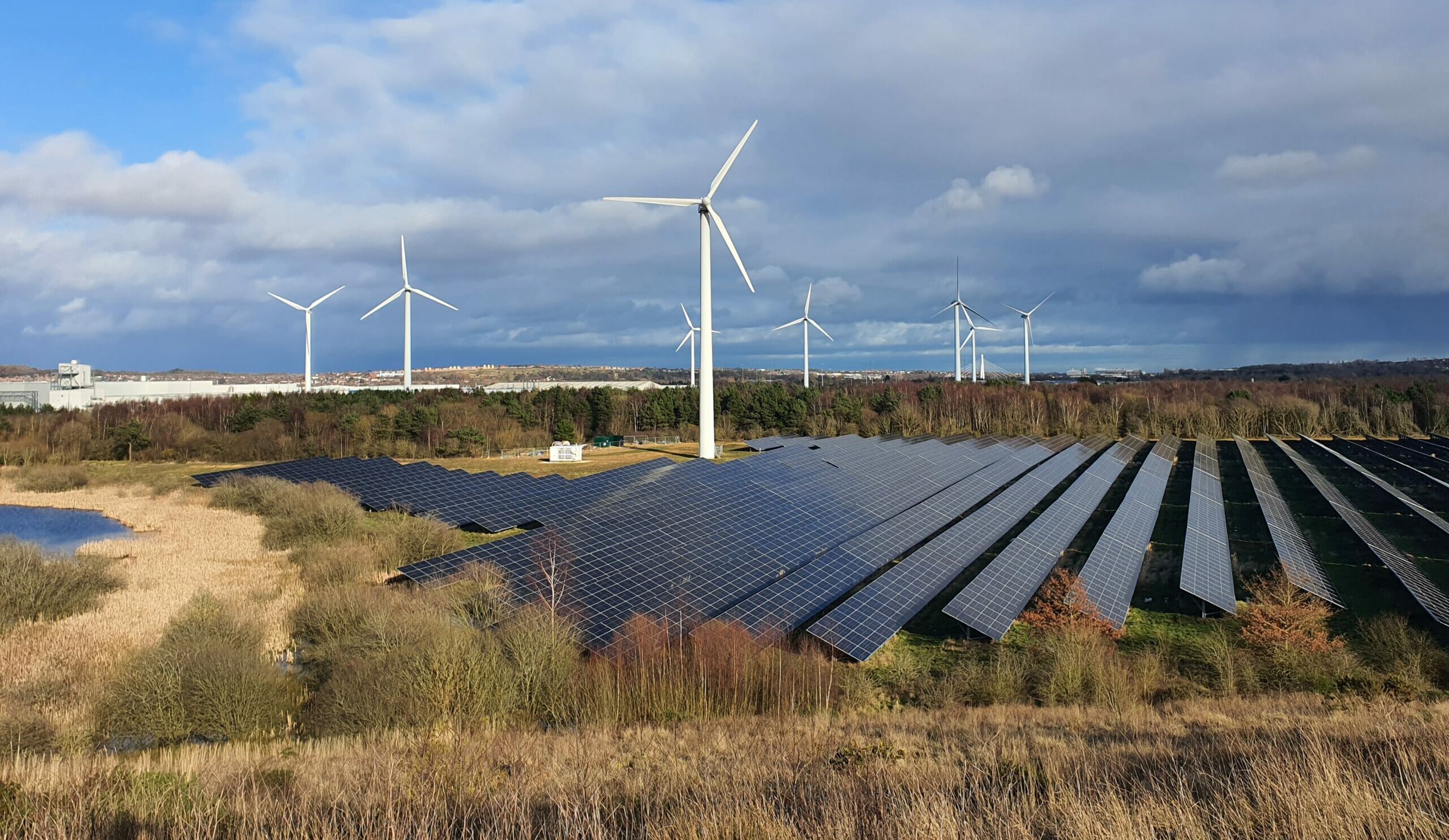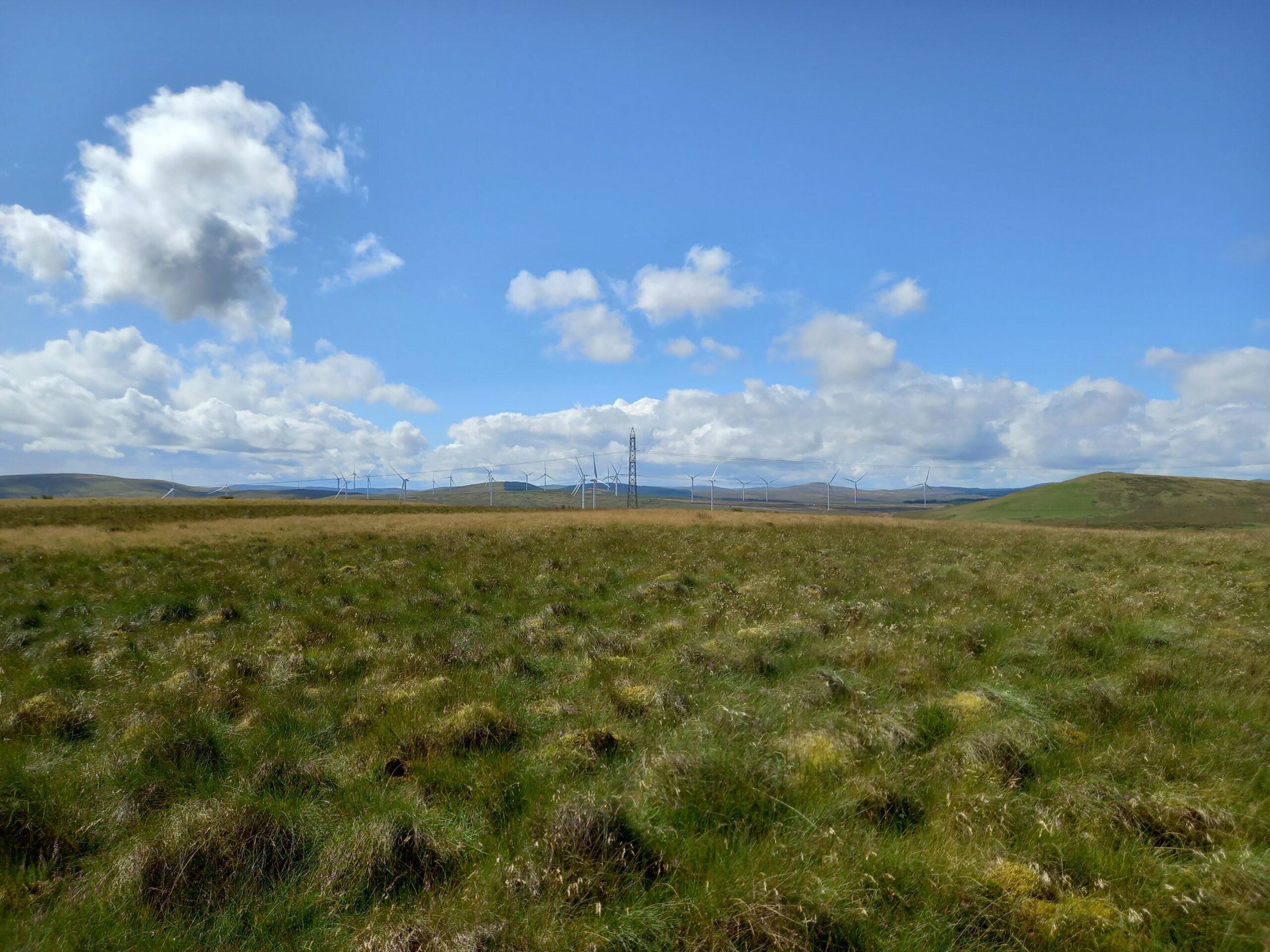
The Proposed location for the Redshaw Battery Energy Storage System (BESS), taken by a member of the Gondolin team during a site visit.
Gondolin Land & Water is proud to have supported the 500 MW Redshaw Battery Energy Storage System (BESS) in South Lanarkshire, which received planning consent earlier this year.
Working alongside ITPEnergised (now SLR) and BayWa r.e., the project represents one of the UK’s largest battery energy storage developments, designed to enhance grid stability and support the national transition to a low-carbon energy network.
Gondolin provided a range of environmental and engineering assessments in support of the Section 36 application, including:
- Hydrology, Hydrogeology, Geology and Ground Conditions Environmental Appraisal
- Flood Risk and Drainage Assessment
- Firewater Management Plan
- Groundwater Dependent Terrestrial Ecosystem (GWDTE) Assessment
- Outline Peat Management and Restoration Plan
- Preliminary Earthworks Design

"Gondolin provided invaluable expertise on a complex site. Their thorough assessments, high-quality design input, and practical approach ensured a smooth and efficient planning process, delivering excellent results which will add a great amount of value and certainty to the project's construction phase."
Gemma Hamilton
Head of Development Strategy & Origination
Baywa r.e.
Site and Environmental Context
The 101-hectare site lies approximately 3.5 km south-east of Douglas, South Lanarkshire. It comprises moorland and rough grazing land underlain by diamicton till and sandstone bedrock, with localised pockets of shallow peat. These conditions were carefully considered throughout the design process to minimise disturbance and protect local hydrology.
Detailed topographic and hydrological assessments informed the design of the BESS platform, access tracks and SuDS infrastructure, ensuring the layout avoided deeper peat and safeguarded adjacent watercourses.
Peat Management and Restoration for the Redshaw Battery Energy Storage System Site Location
Peat protection was a key focus for the project. There were over 3,700 peat depth points collected across the site, supported by coring and soil classification, to provide a comprehensive understanding of peat characteristics.
The Outline Peat Management Plan demonstrated that all excavated peat could be reused on-site, achieving a neutral peat balance and removing the need for off-site disposal. A 3.48-hectare peatland restoration area was also identified, where historical artificial drains will be blocked to encourage natural re-wetting and habitat recovery.
Following a SEPA holding objection in April 2025, Gondolin worked with the client to refine the plan, reducing reinstatement widths, minimising storage durations and tightening handling measures. SEPA subsequently lifted its objection, confirming the plan met the requirements of National Planning Framework 4 Policy 5 and SEPA’s Developments on Peat guidance.
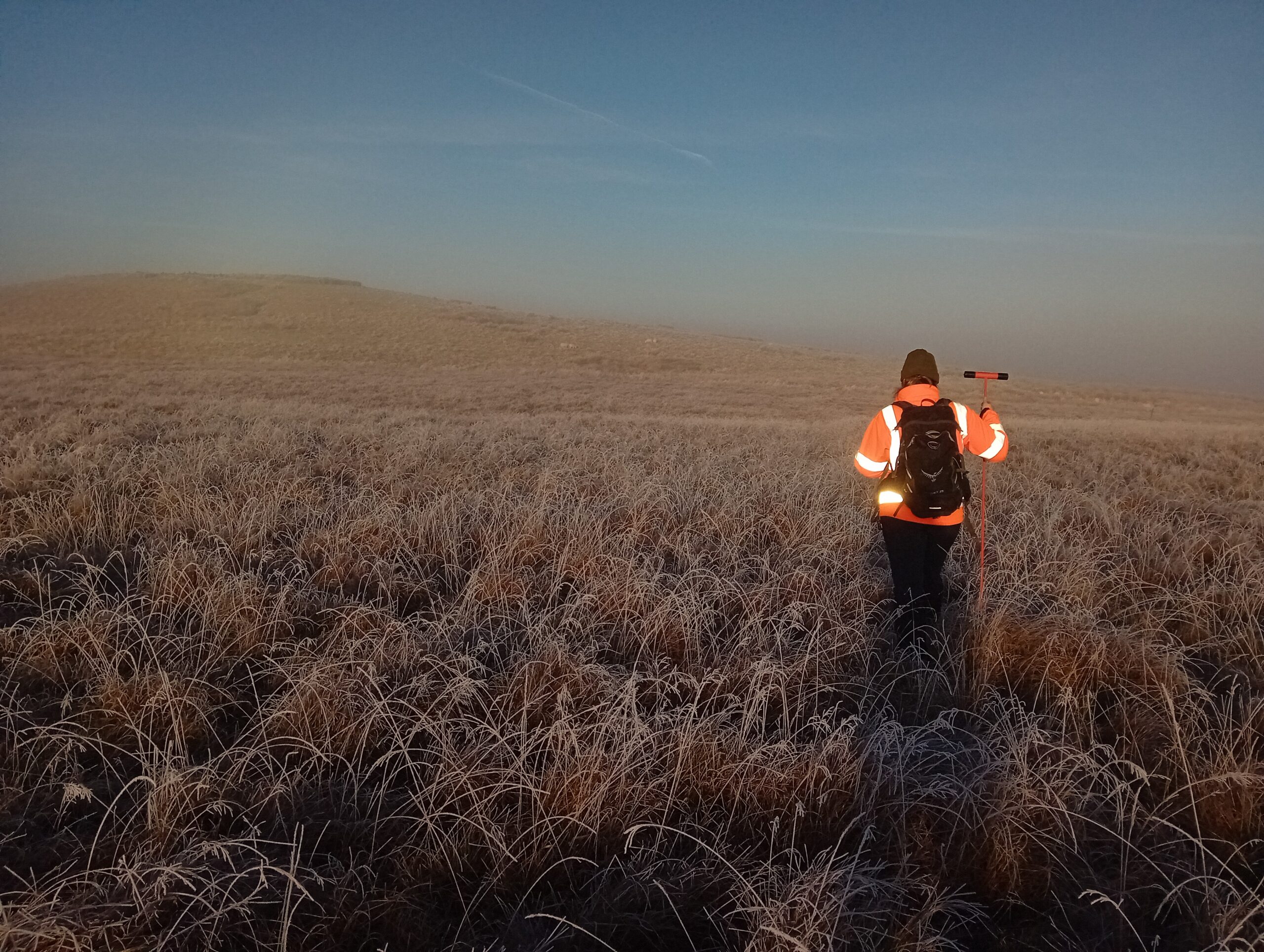
Gondolin Land & Water's Peat Specalists on the proposed Redshaw BESS site.
GWDTE and Ecological Assessment
Gondolin’s GWDTE Assessment confirmed that no groundwater-dependent terrestrial ecosystems are present within the development area. Nineteen trial pits were excavated across the site, all showing that vegetation communities were maintained by surface and rainwater inputs rather than groundwater.
The study demonstrated full compliance with SEPA guidance, confirming that the proposed works would not affect groundwater-dependent habitats or protected ecological features.
Firewater and Drainage Design
Firewater management and surface water protection were integral to the project design. Gondolin prepared a Firewater Management Plan in accordance with National Fire Chiefs Council (NFCC) 2023 guidance, ensuring that any firewater runoff could be fully contained on site.
Two lined SuDS attenuation ponds, with capacities of 2,747 m³ and 8,395 m³, were designed to hold both rainfall and potential firewater runoff. Each pond includes remotely operated penstock isolation valves, allowing firewater to be isolated, tested and safely managed prior to discharge.
In addition, seven static water tanks provide a combined capacity of 228 m³, exceeding NFCC firefighting supply requirements for a two-hour duration. Together, these measures ensure there will be no uncontrolled discharge of potentially contaminated runoff to the surrounding environment.
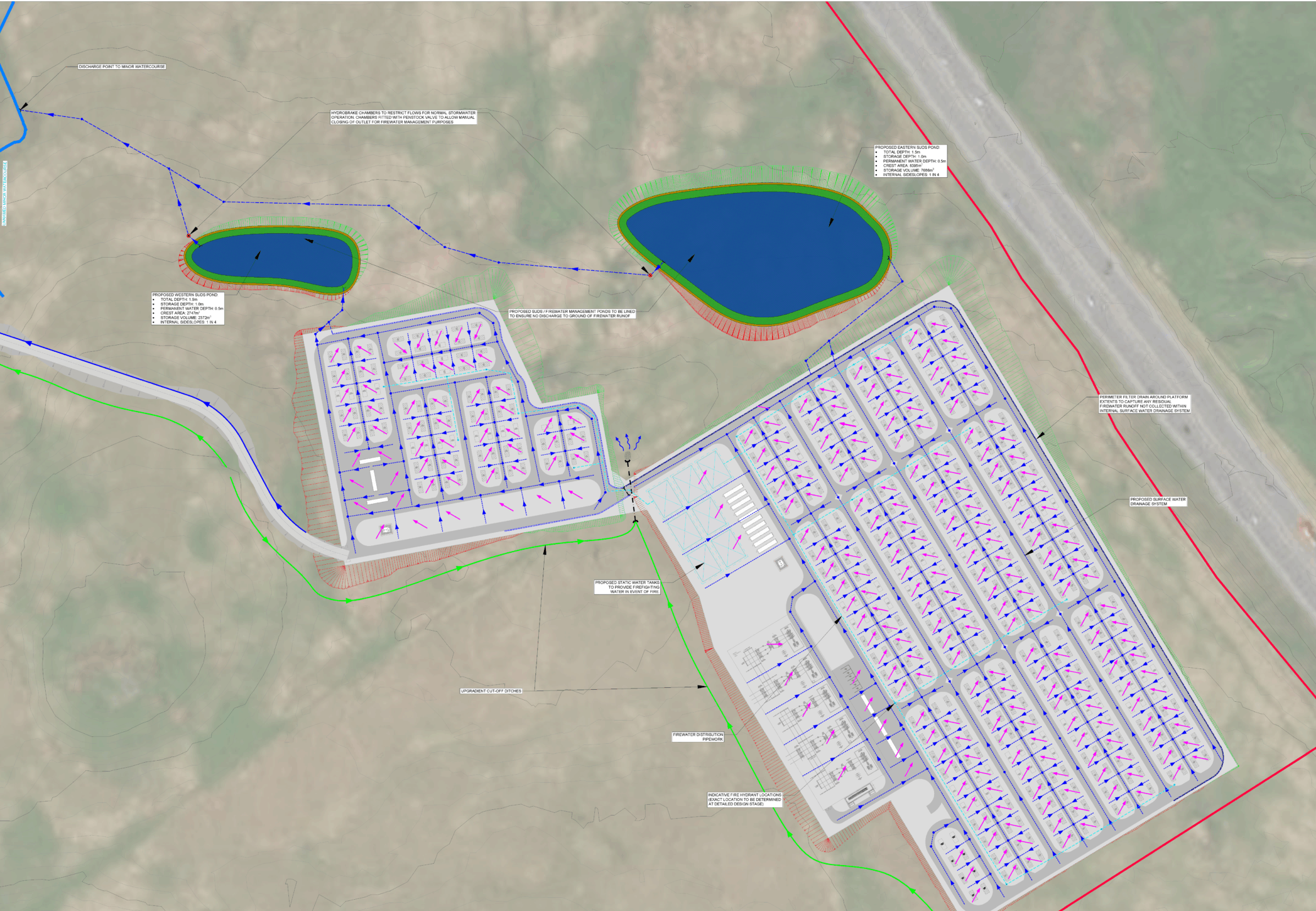
A snapshot of Gondolin's proposed Drainage & Firewater Management Plan (FWMP)
Preliminary Earthworks Design
Due to the sloping terrain encountered at the site, Gondolin's Civil Engineers developed a Preliminary Earthworks Design and developed a 3D model with detailed cross sections and cut / fill volumes.
This information is critical in terms of feeding into the overall design of the site, for example setting the finished platform levels, informing the drainage design and input to the noise and landscape assessments. It also is key in ensuring constructability and achieving a neutral material balance reduces the reliance on imported soils and material from offsite which leads to lower construction costs for the developer.
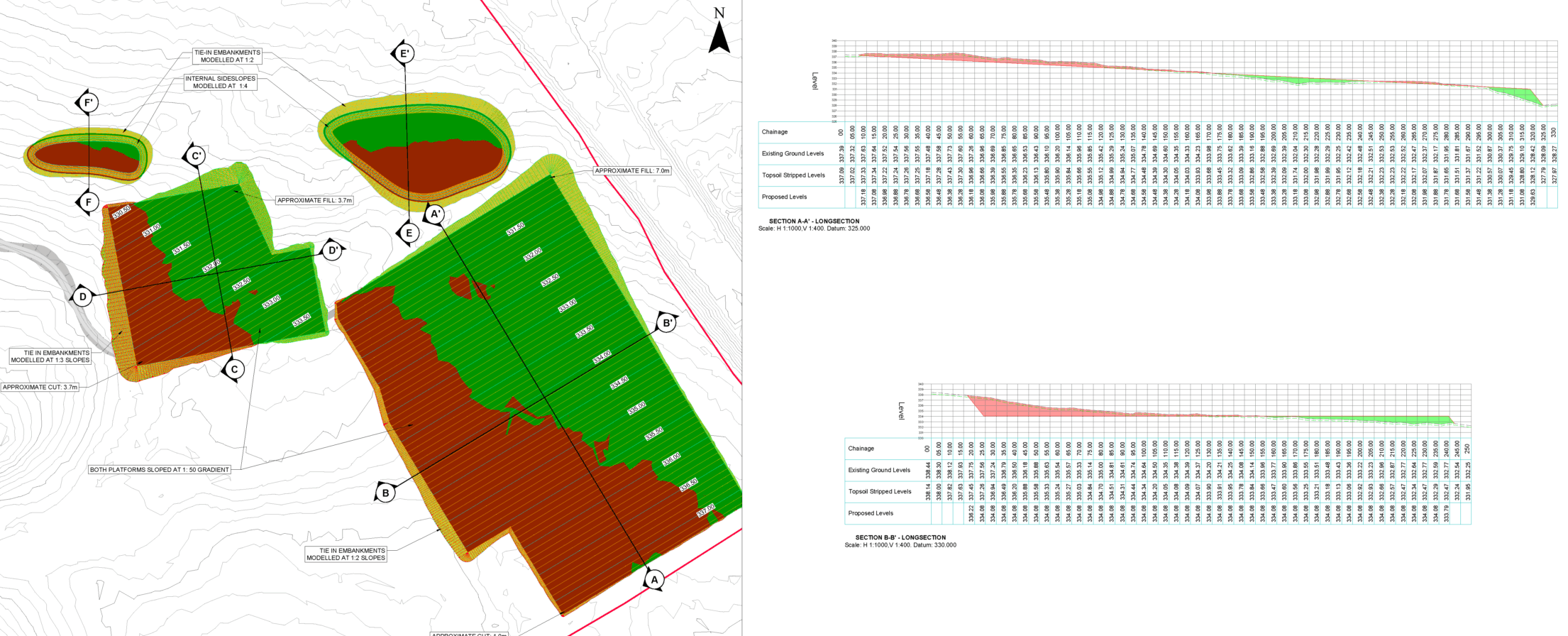
Preliminary Earthworks Design
Collaborative Approach for the Redshaw Battery Energy Storage System
The Redshaw BESS project drew on the combined expertise of Gondolin’s civil engineers, hydrologists and peat specialists. The team’s coordinated approach ensured that the project design met the highest standards of environmental protection, technical rigour and regulatory compliance.
Outcome
The project received Section 36 consent in 2025, marking a significant milestone for the UK’s renewable energy and energy storage sector. Gondolin’s multi-disciplinary input provided the environmental assurance and engineering solutions needed to support delivery of BayWa r.e.’s largest battery storage project in Europe.

